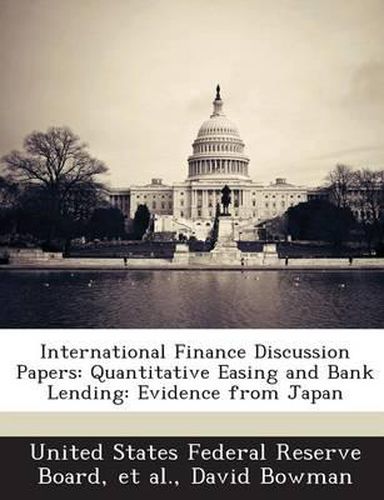Readings Newsletter
Become a Readings Member to make your shopping experience even easier.
Sign in or sign up for free!
You’re not far away from qualifying for FREE standard shipping within Australia
You’ve qualified for FREE standard shipping within Australia
The cart is loading…






Prior to the recent financial crisis, one of the most prominent examples of unconventional monetary stimulus was Japan’s “quantitative easing policy” (QEP). Most analysts agree that QEP did not succeed in stimulating aggregate demand sufficiently to overcome persistent deflation. However, it remains unclear whether QEP simply provided little stimulus, or whether its positive effects were overwhelmed by the contractionary forces in Japan’s post-bubble economy. In the spirit of Kashyap and Stein (2000) and Hosono (2006), this paper uses bank-level data from 2000 to 2009 to examine the effectiveness in promoting bank lending of a key element of QEP, the Bank of Japan’s injections of liquidity into the interbank market. We identify a robust, positive, and statistically significant effect of bank liquidity positions on lending, suggesting that the expansion of reserves associated with QEP likely boosted the flow of credit. However, the overall size of that boost was probably quite small. First, the estimated response of lending to liquidity positions in our regressions is small. Second, much of the effect of the BOJ’s reserve injections on bank liquidity was offset as banks reduced their lending to each other. Finally, the effect of liquidity on lending appears to have held only during the initial years of QEP, when the banking system was at its weakest; by 2005, even before QEP was abandoned, the relationship between liquidity and lending had evaporated.
$9.00 standard shipping within Australia
FREE standard shipping within Australia for orders over $100.00
Express & International shipping calculated at checkout
Prior to the recent financial crisis, one of the most prominent examples of unconventional monetary stimulus was Japan’s “quantitative easing policy” (QEP). Most analysts agree that QEP did not succeed in stimulating aggregate demand sufficiently to overcome persistent deflation. However, it remains unclear whether QEP simply provided little stimulus, or whether its positive effects were overwhelmed by the contractionary forces in Japan’s post-bubble economy. In the spirit of Kashyap and Stein (2000) and Hosono (2006), this paper uses bank-level data from 2000 to 2009 to examine the effectiveness in promoting bank lending of a key element of QEP, the Bank of Japan’s injections of liquidity into the interbank market. We identify a robust, positive, and statistically significant effect of bank liquidity positions on lending, suggesting that the expansion of reserves associated with QEP likely boosted the flow of credit. However, the overall size of that boost was probably quite small. First, the estimated response of lending to liquidity positions in our regressions is small. Second, much of the effect of the BOJ’s reserve injections on bank liquidity was offset as banks reduced their lending to each other. Finally, the effect of liquidity on lending appears to have held only during the initial years of QEP, when the banking system was at its weakest; by 2005, even before QEP was abandoned, the relationship between liquidity and lending had evaporated.